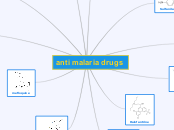Herpes
General
Sensitivity
Organic solvent
Thermolabile
Replication
Where does replication occur?
Nucleus
Structure
Lipid envelope
Icosahedral
Linear dsDNA
Others
HH8
Kaposi's Sarcoma
HH7
May cause mononucleosis-like syndrome
Almost all children infected by age 2
Resembles HH6
HH6
VZV
VZV Ig
Live, attenuated vaccine
Immunological test
For Ag detection
Chickenpox
Shingles
CMV
Transplacental transmission
Most common transplacentally transmitted infection in the U.S.
Resembles infectious mononucleosis
No heterophile Ab
Owl's eyes
Enlargement of infected cells with pronuclear inclusions
EBV
Supportive
No specific AV
Early infection
leads to..
Benign disease
Subtopic
Monospot
Heterophile antibodies
Cross-react w/ sheep, goat RBCs
Heterophile Ab
All of these may serve as buzzwords
Immunosuppressed
Oral Hairy leukoplakia
B cell lymphoma
African Burkitt's lymphoma
Where would you find a high incidence of African Burkitt's lymphoma?
Regions w/ high incidence of malaria
Non-Hodgkin's lymphoma
Nasopharyngeal carcinoma
Where is it endemic?
China
Hodgkin's Disease
Infectious mononucleosis
Downey cells
Atypical lymphocytes
HSV
Treatment
Requires activation by viral thymidine kinase
Foscarnet
When resistant to acyclovir
Valacyclovir
Valacyclovir or "Valtrex" is a prodrug of...
Acyclovir
Decreases severity of primary infectionI.V. for encephalitis and neonatal infectionsPrevention
Experimental vaccines
Herpevacdl5-29C-section
Avoid contact esp. sexual
Epidemiology
Predisposing factors
SES
Immuno. status
Place
Where in the world will you find Herpes?What is the reservoir?Humans only reservoir
Transmission
Asymptomatic shedding
Direct contact w/ infected secretions
Diagnosis
Serology
Only for primary infection
EIA
Antigen detection
Tzanck smear
Scrape the lesion
Isolation in cell culture
Most definitive
Clinical
HSV-2
Clinical manifestations of HSV-2 infection
1. Primary infection presents as papules progressing to vesicles and pustules,
lymphadenopathy and tenderness, 3-4 weeks duration
2. Recurrent infection characterized by prodrome followed by groups of vesicles on external genitalia, 1-2 weeks duration
3. Neonatal herpes usually due to HSV-2 acquired by passage through infected birth
canal; 60% mortality with survivors suffering neurologic sequelae; disseminated vesicular lesions with internal organ involvement
Neonatal herpes
HSV-1
Clinical manifestations of HSV-1 infection
1. Primary infection often asymptomatic; 50-90% of population is seropositive
2. Primary gingivostomatitis—fever, irritability, painful vesicular lesions on buccal
mucosa, tongue, gums, throat, 1-2 weeks duration
3. Recurrent infection characterized by prodrome, followed by unilateral vesicles of 1
week duration
4. Ocular lesions can lead to permanent corneal scarring
5. Causes 10% of viral encephalitis with 70% mortality if untreated
Genital herpes
Encephalitis
Ocular herpes
Herpetic whitlow
Fever blisters
Gingivostomatitis
Characteristics
Pathophysiology
Pathophysiology of infection
1. Acute infection results in multinucleated cells (syncytia), ballooning degeneration of epithelial cells, necrosis, inclusion bodies, inflammatory response, cell to cell spread, latent infection of ganglia
2. Latent infection does not destroy ganglia; viral genome persists as circular DNA; reactivation of virus replication leads to recurrent disease
3. Recurrence triggered by stress, ultraviolet light, hormonal flux
4. Spreads from cell to cell in presence of antibody
5. Cell-mediated immunity contributes to symptoms and resolution
Triggers for recurrence
Hormonal flux
UV light
Stress
Syncytia









